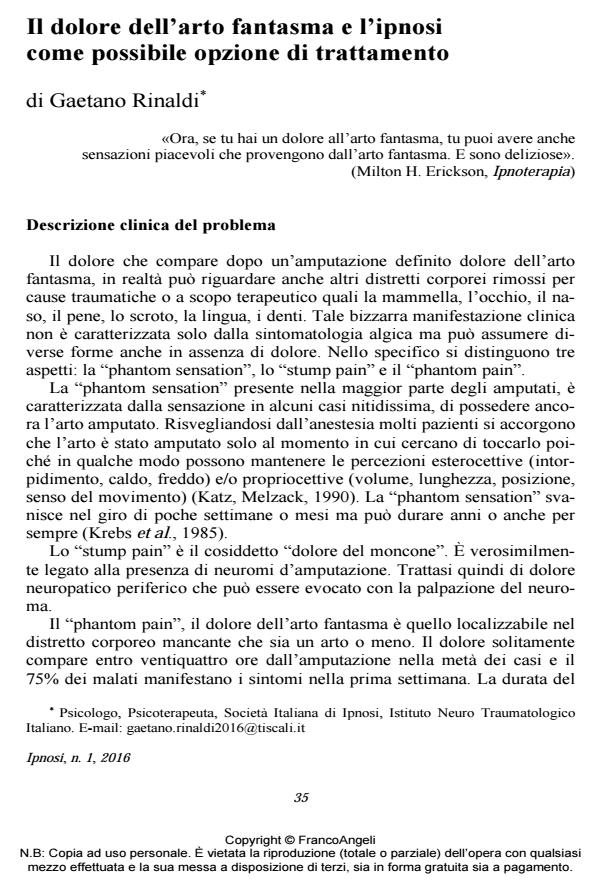Il dolore dell’arto fantasma e l’ipnosi come possibile opzione di trattamento
Titolo Rivista IPNOSI
Autori/Curatori Gaetano Rinaldi
Anno di pubblicazione 2016 Fascicolo 2016/1
Lingua Italiano Numero pagine 12 P. 35-46 Dimensione file 211 KB
DOI 10.3280/IPN2016-001004
Il DOI è il codice a barre della proprietà intellettuale: per saperne di più
clicca qui
Qui sotto puoi vedere in anteprima la prima pagina di questo articolo.
Se questo articolo ti interessa, lo puoi acquistare (e scaricare in formato pdf) seguendo le facili indicazioni per acquistare il download credit. Acquista Download Credits per scaricare questo Articolo in formato PDF

FrancoAngeli è membro della Publishers International Linking Association, Inc (PILA)associazione indipendente e non profit per facilitare (attraverso i servizi tecnologici implementati da CrossRef.org) l’accesso degli studiosi ai contenuti digitali nelle pubblicazioni professionali e scientifiche
The phantom limb syndrome, in its different aspects, is in some ways to this day still a neurological mystery. The algic component of the problem has been treaded with physical procedures such as the mirror box eith promising results. Recently the trend is towards mind-body treatments which rest on new technologies apt to produce a virtual reality. The author of the article reports his therapeutic experience with a patient suffering from such a syndrome, through the use of an older but very current mind-body therapy: hypnosis.
Parole chiave:Arto fantasma, ipnosi, mirror box, realtà virtuale, dolore, mente-corpo.
Gaetano Rinaldi, Il dolore dell’arto fantasma e l’ipnosi come possibile opzione di trattamento in "IPNOSI" 1/2016, pp 35-46, DOI: 10.3280/IPN2016-001004